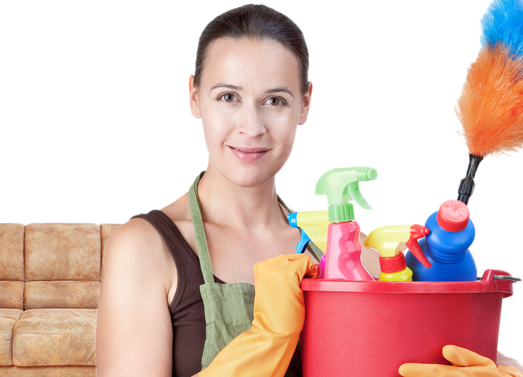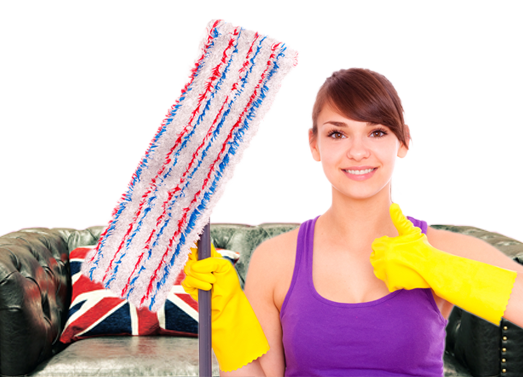Ultimate Guide to a Dust-Free, Allergen-Reduced Dwelling
Posted on 08/09/2025
Ultimate Guide to a Dust-Free, Allergen-Reduced Dwelling
Are you tired of perpetually fighting dust and allergens in your home? A dust-free, allergen-reduced dwelling is a sanctuary for millions who suffer from allergies, asthma, or simply value a cleaner indoor environment. This comprehensive guide dives deep into practical strategies, expert tips, and innovative solutions to transform your home into an oasis of clean air and comfort. Read on for everything you need to know about maintaining a healthier, dust-resistant, and allergen-controlled dwelling!
Understanding Indoor Allergens and Household Dust
Before you can successfully create a dust-free, allergen-reduced home, it's essential to understand what you're fighting against.
What is Dust?
Household dust is a complex mixture of:
- Dead skin cells
- Fabric fibers
- Pollen
- Mold spores
- Pet dander
- Dust mite droppings
- Soil and other microscopic debris
Each of these components can act as an allergen or an irritant, especially for sensitive individuals. Understanding your primary triggers (whether it's pollen, pet dander, or dust mites) allows you to tailor your cleaning strategy.
The Health Impact of Allergens and Dust
Exposure to indoor allergens can cause symptoms such as:
- Sneezing, runny or stuffy nose
- Itchy eyes and skin
- Chronic cough and respiratory irritation
- Asthma attacks and worsening symptoms
- Fatigue and poor sleep quality
Reducing exposure is especially crucial for young children, the elderly, and anyone with asthma, eczema, or allergies.

Essential Strategies for a Dust-Free Home
Achieving a dust-free, allergen-controlled dwelling requires a multi-layered approach. Let's break down the most effective techniques for minimizing dust and allergens indoors.
Adopt Allergy-Friendly Cleaning Habits
- Dust with Damp Cloths: Always use a damp microfiber cloth or electrostatic duster to trap dust, not simply spread it round.
- Vacuum Frequently: Utilize a vacuum with a true HEPA filter at least twice a week, particularly on carpets, rugs, and furniture.
- Avoid Feather Dusters: These just agitate and redistribute dust; instead, stick to tools that capture and remove dust.
- Wash Bedding Weekly: Dust mites thrive in bedding. Hot water washes (at least 130?F/54?C) kill mites and remove allergens.
- Declutter Regularly: The less you have, the fewer surfaces for dust to settle upon. *A minimalist approach eases cleaning greatly.*
Choose Allergen-Reducing Flooring
- Hard Flooring Over Carpets: Carpet traps dust, dander, and pollen. Hardwood, tile, vinyl, and linoleum are much easier to clean and maintain allergen-free.
- Washable Rugs: If rugs are a must, choose machine-washable options and clean them regularly.
Control Humidity and Ventilation
- Use a Dehumidifier: Maintain indoor humidity between 30-50% to inhibit dust mites and mold growth.
- Ventilate: Open windows on dry, low-pollen days to freshen air, or use mechanical ventilation systems with filters.
Smart Room-by-Room Allergen Reduction
Living Room
- Opt for leather or vinyl furniture: These materials don't trap allergens as much as fabric does and are simple to wipe clean.
- Limit decor: Fewer throw pillows, knickknacks, and books means less dust buildup.
- Shake out and wash curtains: Switch to blinds or washable curtains to make cleaning easier.
Bedroom
- Encasings: Encase mattresses and pillows with allergen-impermeable covers to block dust mites.
- Wash often: Sheets, pillowcases, and blankets should be washed in hot water weekly.
- Ban pets: If possible, keep pets out of the bedroom to reduce pet dander exposure.
Kitchen
- Use an exhaust fan: Proper ventilation whisks away moisture and cooking particles.
- Regularly empty bins: Prevents mold and pest allergens from thriving.
Bathroom
- Fix leaks: Prevent mold growth by addressing leaks quickly and ventilating well.
- Clean shower and tile: Use mold-inhibiting bathroom cleaners frequently.
Upgrade Your Air Quality
High-Quality Air Purifiers
Air purifiers are a crucial investment for any serious dust-free, allergen-minimized dwelling.
- Choose a unit with a true HEPA filter: These remove 99.97% of airborne under 0.3 microns, including pollen, pet dander, and smoke.
- Place strategically: Most important in bedrooms and main living areas.
- Maintain filters: Follow the manufacturer's schedule for filter changes -- dirty filters lose efficiency.
Central Heating, Ventilation, and Air Conditioning (HVAC)
- Upgrade HVAC filters: Choose filters with a Minimum Efficiency Reporting Value (MERV) of 11-13 for best allergen removal.
- Change filters monthly: Especially during peak heating/cooling season.
- Have ducts cleaned: If you suspect mold or heavy dust, have a professional inspect and clean your ducts.
Picking Allergen-Reducing Products and Materials
Hypoallergenic Bedding and Textiles
- Look for labels: Products labeled hypoallergenic are designed to resist allergy triggers.
- Choose synthetic over natural fibers: Synthetic materials discourage the growth of dust mites.
- Washable options: Select machine-washable mats, curtains, and seat covers whenever possible.
Low-Emitting Building Materials
- VOC-free paints and finishes: Volatile organic compounds worsen indoor allergies and asthma -- always opt for low- or no-VOC products.
- Natural flooring: Consider natural, sealed materials such as bamboo or cork, as they resist dust-mite colonization.
Banishing Pet Dander
Even non-allergic individuals can react to the proteins found in pet skin, saliva, and urine. For an allergen-reduced dwelling with pets, follow these strategies:
- Bathe pets regularly: Every 1-2 weeks can reduce dander significantly.
- Keep pets off beds and upholstered furniture: Set boundaries to minimize exposure.
- Designate pet-free zones: At least one allergen-reduced sanctuary room in the house, like the bedroom.
- Clean litter boxes and cages daily: Wear gloves and a mask while cleaning.
Advanced Strategies for a Dust-Resistant Home
Entryway Defense
- Install high-quality mats: Place coarse, washable mats inside and outside all entrances.
- Shoe-free policy: Have family and guests remove shoes to prevent outdoor allergens and dust from entering.
Organize and Declutter
- Store items in closed bins: Open shelves and storage invite dust accumulation; use closed, wipe-clean containers instead.
- Fewer textiles: Lighten up on curtains, throw blankets, and cushions.
Technology Tools
- Robotic vacuums: Set them to run daily on hard floors or low-pile rugs for maintenance between deep cleans.
- Humidity sensors: Pair with smart dehumidifiers for automatic regulation.
Natural Solutions for Dust and Allergens
Many people prefer non-toxic, environmentally friendly methods for maintaining an allergen-controlled dwelling:
- Baking soda: Sprinkle on carpets, let sit, and vacuum to neutralize odors and loosen dust.
- White vinegar: Mix with water as an all-purpose cleaner for hard surfaces.
- Essential oils: Add to homemade cleaning solutions for an extra boost (test for sensitivity first).
Safe Houseplants for Air Quality
Certain plants can help purify air and reduce circulating dust. Try
- Spider Plant
- Peace Lily
- Boston Fern
- Areca Palm
Note: Some people may be sensitive to plant molds or pollens, so introduce greenery cautiously.

Long-Term Maintenance for an Allergen-Reduced Environment
Consistency is key to a truly dust-free, allergen-minimized home.
- Schedule chores: Regularly assign and rotate cleaning tasks among household members.
- Keep cleaning supplies accessible: Caddies in key rooms make quick wipe-downs easier.
- Monitor air quality: Invest in affordable indoor air quality monitors to track your progress.
- Re-evaluate often: Allergens shift seasonally and as your lifestyle changes--adapt as needed.
Conclusion: Your Healthier, Dust-Free Home Awaits
Creating a dust-free, allergen-reduced dwelling is more than just cleaning--it's about lifestyle choices, quality products, and vigilance. By combining the strategies outlined above, you can enjoy fresher air, fewer allergy attacks, and a truly clean home environment. Make your home a refuge from dust and allergens starting today!
Start with one room, apply these expert tips, and celebrate cleaner, healthier living!





